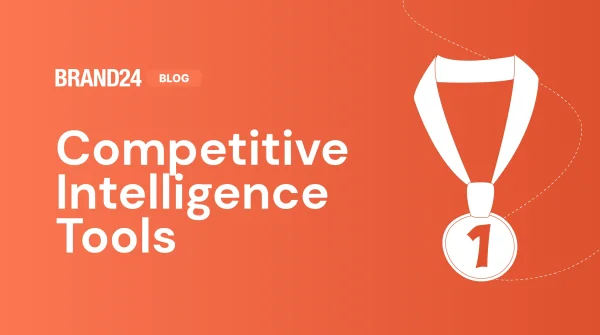Analyse des concurrents d'un restaurant : 4 étapes faciles [Guide]
Table des matières
Selon l'Independent Restaurant Industry Report, 91% des restaurants ont continué à augmenter les prix des menus l'année dernière, ce qui a eu un impact négatif sur leur activité. 72% des restaurants ont déclaré avoir le même nombre de clients ou moins de clients en 2024 par rapport à l'année précédente ! C'est pourquoi vous devez vous battre pour chaque client et, pour ce faire, vous devez d'abord comprendre vos concurrents. Comment ? En réalisant une analyse de la concurrence dans le secteur de la restauration.
💡Quick Summary :
- Analyse de la concurrence dans le secteur de la restauration est le processus qui consiste à étudier vos concurrents pour comprendre ce qu'ils font bien et ce qu'ils ne font pas.
- Outils d'analyse des concurrents simplifient considérablement ce processus et le rendent plus efficace, ce qui vaut la peine de les utiliser.
Qu'est-ce que l'analyse de la concurrence dans le secteur de la restauration ?
Analyse de la concurrence dans le secteur de la restauration est le processus de recherche, d'observation et d'évaluation des restaurants qui pourraient potentiellement vous prendre des clients.
Pour quoi faire ?
Pour déterminer votre place sur le marché, voir ce qui fonctionne pour vous concours de restaurants, et repérer les lacunes du marché pour développer votre activité.
Il ne s'agit pas d'une tâche ponctuelle ; elle est utile à chaque étape de la création d'une entreprise :
Avant l'ouverture : Constatez à quel point le marché est encombré et trouvez des moyens de vous démarquer.
Lorsqu'un restaurant fonctionne bien : Gardez un œil sur les concurrents pour vous améliorer et devenir le choix préféré des gens.
Lorsqu'un restaurant est en difficulté : Tirez les leçons des établissements les plus performants et adaptez leurs stratégies pour sauver votre entreprise.
Avant les changements significatifs : Vérifiez comment vos concurrents s'y prennent avant d'essayer quelque chose de nouveau.
Effectuez une analyse de la concurrence !
Pourquoi avez-vous besoin d'une analyse de la concurrence dans le secteur de la restauration ?
Que vous soyez propriétaire d'un petit restaurant de quartier, de quelques établissements populaires en centre-ville ou d'une chaîne entière de restaurants réputés, vous avez besoin d'une analyse de la concurrence.
Grâce à elle, vous obtenez des informations sur la concurrence qui vous aideront à prendre les bonnes décisions (celles qui garantissent que les clients vous choisiront plutôt que d'autres).
En bref, l'analyse de la concurrence dans le secteur de la restauration vous aidera :
Comprendre le marché : Voir ce qui attire les clients dans d'autres restaurants et comprendre les tendances actuelles en matière de restauration
Trouvez votre argument de vente unique : Découvrez ce qui fait la spécificité de votre établissement par rapport à la concurrence et mettez-le en valeur pour vous démarquer.
Améliorez votre offre et votre stratégie de prix : Voyez comment les concurrents structurent leurs offres de menus et leurs prix afin d'adapter les vôtres.
Évaluez vos stratégies de marketing : Apprenez quelles sont les tactiques de marketing qui fonctionnent chez vos concurrents et utilisez ces connaissances.
Trouvez les lacunes du marché que vous pouvez combler pour vous démarquer !
Comment analyser les concurrents de votre restaurant ? 4 étapes
Étape 1 : Identifier les concurrents directs et indirects de votre restaurant
Commencez par définir qui sont vos concurrents. Vous pouvez les diviser en plusieurs catégories :
Concurrents directs - des restaurants très similaires au vôtre, ils peuvent le faire :
Avoir la même cuisine
Se trouver au même endroit
Opérer selon le même modèle d'entreprise
Fonctionner selon le même modèle de service
Exemple : McDonald's et Burger King - tous deux proposent des hamburgers et des frites.
Concurrents indirects - des restaurants qui proposent des produits et des cuisines différents, mais qui s'adressent aux mêmes clients que vous.
Exemple : Crumbl Cookies vs. Starbucks - Crumbl propose des biscuits gourmands, tandis que Starbucks se concentre sur le café et les boissons. Malgré cela, les deux entreprises sont en concurrence pour attirer les clients pressés qui recherchent des friandises sur le pouce.
D'accord, vous pouvez les diviser en concurrents directs et indirects, mais comment les trouver ?
Voici mes trois faciles méthodes pour identifier vos concurrents 👇
Utiliser la recherche Google de manière stratégique
Google est l'un des outils les plus simples et les plus efficaces pour trouver des concurrents.
Il vous suffit d'effectuer une recherche en utilisant des expressions que vos clients potentiels sont susceptibles d'utiliser, telles que
Meilleur restaurant italien de [emplacement]
Cuisine grecque près de chez moi
Cafés végétaliens [emplacement]
Si vous êtes un acteur important du secteur de la restauration, essayez-les :
[Nom de votre restaurant] concurrents
[Nom de votre restaurant] alternatives
N'oubliez pas que les résultats obtenus ne sont pas toujours tout à fait exacts - ils dépendent de la manière dont chaque restaurant gère ses stratégies de référencement et de marketing.
Prêt à prendre de l'avance sur vos concurrents ? Lancez une analyse concurrentielle !
Demander à l'assistant IA
Une méthode plus précise consiste à utiliser un assistant d'intelligence artificielle, tel que Assistant de marque.
Il permet d'identifier facilement les principaux concurrents de votre restaurant, qu'il s'agisse d'un restaurant de tacos à New York ou d'une chaîne de restauration rapide comme Shake Shack.
Voici un aperçu rapide de ce que vous devez faire :
- S'inscrire pour un essai gratuit de Brand24.
- Créer un projet pour votre restaurant - vous devez entrer le nom de votre restaurant.
- Laissez l'outil collecter des données sur votre restaurant.
- Une fois que les données sont prêtes, accédez à l'assistant AI Brand et demander d'identifier vos concurrents.
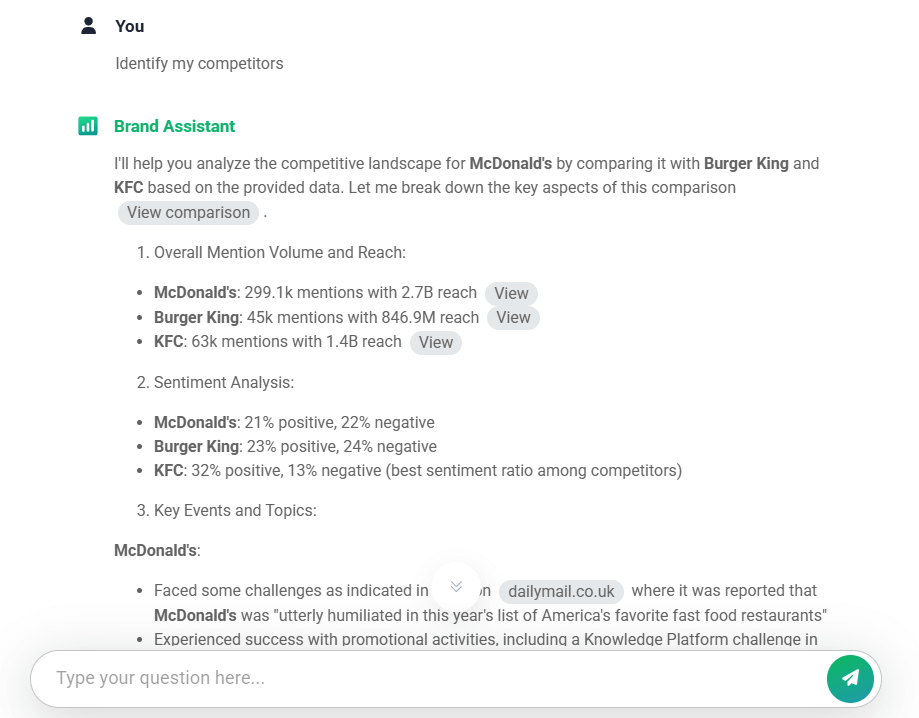
Je viens de vous montrer comment fonctionne le Brand Assistant en prenant l'exemple de McDonald's.
Effectuez une analyse de la concurrence dans le secteur de la restauration avec Brand Assistant !
Outils de référencement
Vous pouvez également utiliser un outil de référencement, comme Semrush.
Toutefois, n'oubliez pas que ces outils affichent les domaines qui vous font concurrence dans les résultats de recherche - ils n'affichent pas directement les noms de marque.
C'est pourquoi cette méthode n'est pas toujours la plus précise pour les petits restaurants ou les restaurants locaux.
Voici comment cela fonctionne :
Connectez-vous à votre compte Semrush et allez dans la section Recherche biologique onglet. Saisissez ensuite le domaine du site web de votre restaurant.
Semrush vous montrera, entre autres, les mots-clés pour lesquels votre site est classé (l'onglet Aperçu) :

Si vous allez dans la section Concurrents, vous verrez une liste de domaines qui sont vos principaux concurrents dans les résultats de recherche.
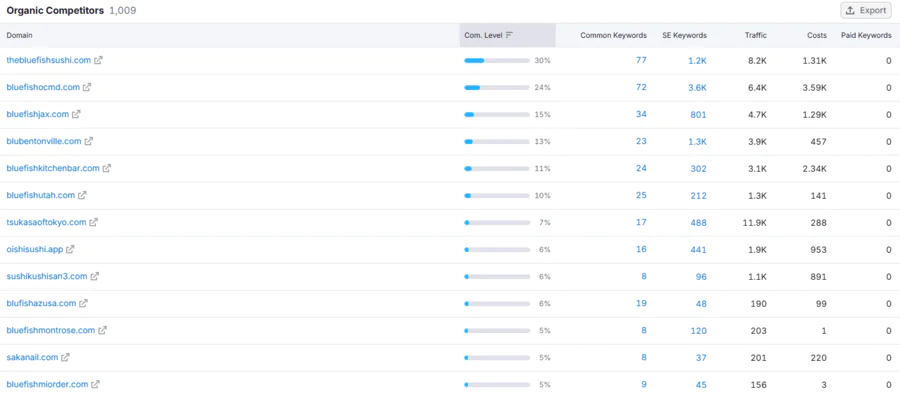
Je vous ai montré comment cette méthode fonctionne, en prenant l'exemple de la chaîne locale de restaurants de sushis Blufish, dans l'Illinois.
Commencez votre analyse concurrentielle avec les meilleurs outils !
Étape 2 : Examiner les informations les plus importantes
L'étape suivante consiste à rassembler les informations les plus essentielles sur vos concurrents.
Voici ce sur quoi il faut se concentrer :
Modèle d'entreprise : Quel est le modèle commercial de ces restaurants (restauration rapide, décontractée, raffinée, etc.) ? Proposent-ils des services de livraison ou de vente à emporter ? Quel système de commande en ligne utilisent-ils ?
Réservations : Accepte-t-il les réservations ? Si oui, est-ce en ligne, par téléphone ou les deux ? Quelles plateformes ou quels systèmes utilisent-ils pour les réservations ?
Messages de la marque: Quel est leur argument de vente unique (USP) et comment communiquent-ils avec les clients ?
Stratégie de tarification et analyse des menus: Quels sont les prix pratiqués par l'établissement par rapport à d'autres ? Quels sont les menus proposés ? Proposent-ils des offres spéciales telles que des happy hours, des réductions ou des programmes de fidélisation ?
Présence dans les médias sociaux : Quelles plateformes utilisent-ils et quel est le degré d'engagement de leurs adeptes ? Sont-ils suffisamment visibles pour attirer de nouveaux clients ?
⚠️ Il est essentiel d'utiliser efficacement les médias sociaux pour mettre en valeur l'histoire, l'objectif et les valeurs uniques du restaurant. Vous aurez ainsi plus de clients dans votre restaurant !
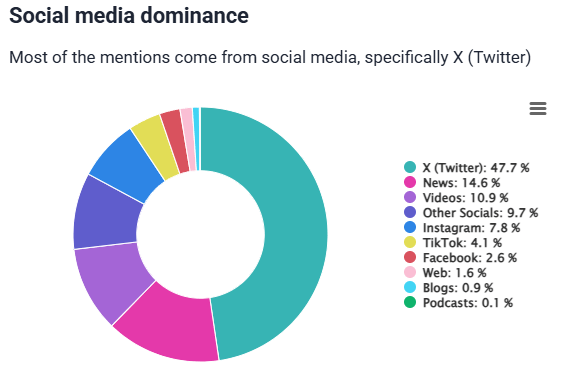
Stratégie publicitaire: Où et comment font-ils de la publicité ? Privilégient-ils les canaux en ligne ou les méthodes traditionnelles hors ligne ? Quelle est l'efficacité de leur publicité ?
Sentiment de la marque : Que disent les internautes de ces restaurants ? Les commentaires sont-ils globalement positifs, négatifs ou neutres ? Comment le sentiment varie-t-il d'un canal en ligne à l'autre ?
⚠️ Analyse des sentiments catégorise automatiquement les restaurants mentions comme positifs ou négatifs. Cela vous permet de comprendre rapidement ce que les gens pensent d'un restaurant et de trouver les points forts et les points faibles pour attirer plus de clients. De plus, vous pouvez résoudre les problèmes et les avis négatifs en ligne avant qu'ils ne s'aggravent.
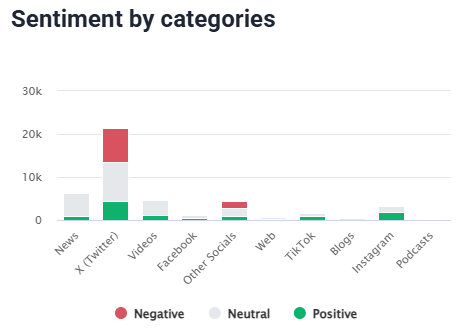
Avis en ligne des clients: Quelles sont les évaluations et les commentaires sur les plateformes d'évaluation telles que Yelp, TripAdvisor, Google ? Que disent les clients de la nourriture, du service et de l'ambiance ?
La part de voix : Quelle est l'importance du buzz et de l'attention en ligne dont bénéficient vos concurrents par rapport à vous et à d'autres ?
⚠️ Part de voix révèle la popularité d'un restaurant au sein d'un marché spécifique. Plus sa part est importante, plus il est susceptible d'attirer des clients.
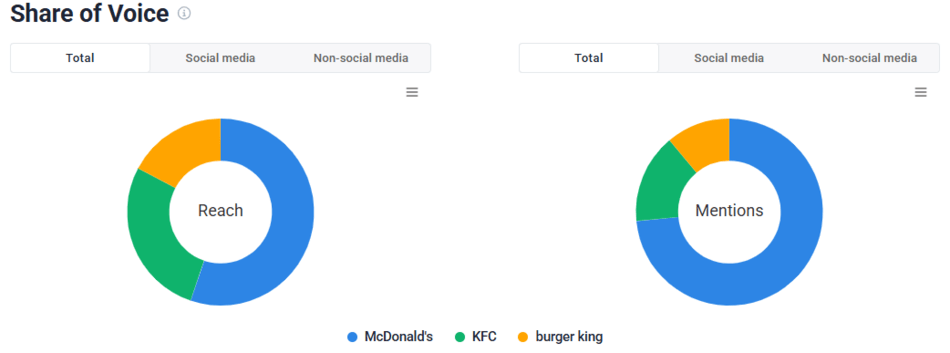
Stratégie de référencement: Comment les concurrents apparaissent-ils dans les moteurs de recherche ? Quels sont les mots-clés pour lesquels ils se classent ?
Réalisez dès maintenant l'analyse concurrentielle de votre restaurant !
Étape 3 : S'informer sur le public cible
Pour bien comprendre vos concurrents, vous devez connaître leur marché cible.
Qui sont ces personnes qui mangent dans ces restaurants ? De quoi parlent-ils lorsqu'ils visitent le restaurant ? Quand parlent-ils en ligne de vos concurrents ? Quelles émotions expriment-ils ?
Ceci est particulièrement important si vous effectuez une analyse concurrentielle de vos concurrents indirects parce que vous visez les mêmes clients.
En obtenant des informations sur les préférences des clients et en comprenant leurs comportements en ligne, vous pouvez adapter votre marketing et vos offres pour mieux les attirer !
Voici comment :
Analyser ce dont parle leur public
Examinez attentivement les conversations en ligne sur votre concurrent. Quels sont les sujets qui reviennent le plus souvent ?
Ces discussions révèlent ce qui importe le plus à leurs invités. Parmi les différents thèmes abordés figurent les possibilités de se démarquer dans le secteur, mais aussi les idées à éviter.
Comment faire ?
Utilisation Analyse du sujet - Il analyse tous les mention de votre concurrent et classe automatiquement les conversations en fonction de thèmes clés.
Les résultats sont clairement présentés, avec des indicateurs clés.
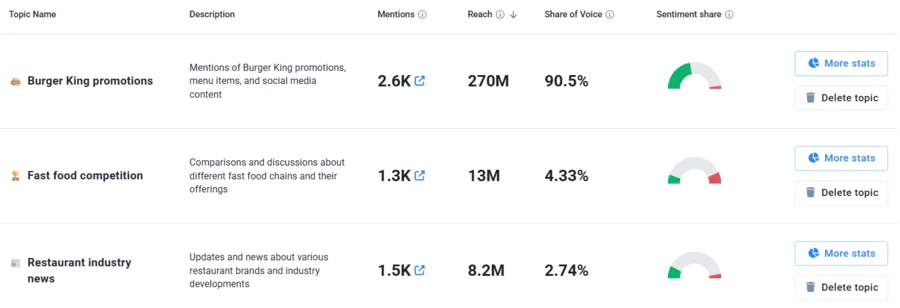
Les sujets les plus discutés à propos de Burger King :
1️⃣ Promotions, menus et contenu des médias sociaux (2,6k mentions, 270M reach)
2️⃣ Comparaison de différentes chaînes de restauration rapide et de leur offre (1,3k mentions, 13M reach)
3️⃣ Mises à jour et nouvelles concernant diverses marques de restaurants et l'évolution du secteur (1,5k mentions, 8,2M reach)
Analysez les discussions de vos concurrents et gagnez en compétitivité !
Identifier les moments où leurs invités sont les plus enclins à s'engager sur les médias sociaux
Suivez les moments où votre marché cible est actif sur les médias sociaux. Le meilleur moment pour publier est celui où les gens sont le plus susceptibles de s'intéresser à votre contenu !
Si vous connaissez ces heures de pointe, vous pourrez mieux programmer vos propres posts.
Comment faire ?
Utilisez le Heures chaudes caractéristique. Elle vous indique le meilleur moment pour publier sur les médias sociaux sur la base de trois facteurs clés :
- Lorsque le plus grand nombre de mention est publié
- Lorsque ces mention génèrent le plus de portée
- Lorsque les gens interagissent le plus activement avec eux

Les meilleures heures pour Burger King pour poster sur Instagram et obtenir un engagement élevé (GMT+1) :
✔️ Lundi DE 12 À 13 HEURESDE 15 H À 16 H
✔️ Mardi DE 9 À 10 HEURES
✔️ Jeudi 17H-18H, 19H-21H
✔️ Samedi DE 5 À 6 HEURES, DE 5 À 18 HEURES, DE 7 À 20 HEURES
Quand l'audience de vos concurrents est-elle la plus active ? Vérifiez-le maintenant !
Apprendre d'où ils viennent
Vérifiez la situation géographique de l'audience en ligne de votre concurrent.
Si vous savez d'où proviennent les mention, la portée et les interactions, vous pouvez adapter vos efforts marketing et commerciaux afin d'attirer davantage de clients similaires ou de découvrir de nouveaux marchés à développer.
Comment faire ?
Utilisez le Analyse géographique - il montre :
- Les emplacements des mention en ligne
- Les lieux où leur portée est la plus grande
- Là où les gens interagissent le plus
Vous verrez précisément quels sont les pays et quels sont les chiffres.
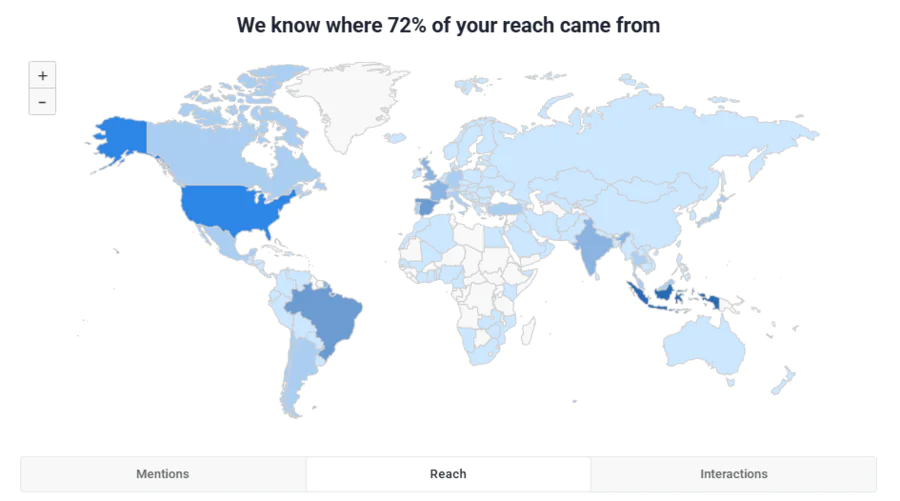
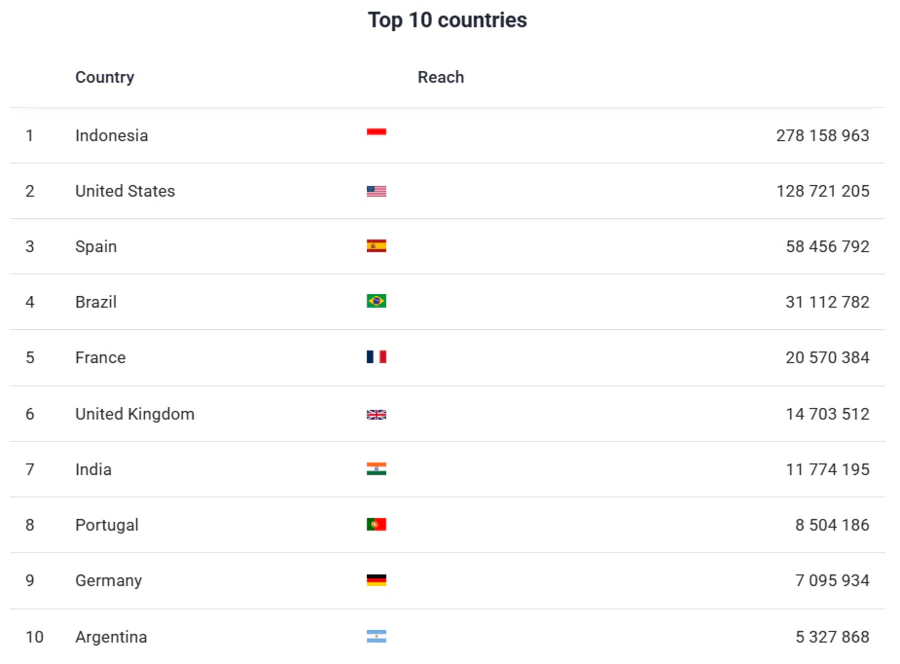
Burger King a la plus grande portée sur ces trois marchés :
1️⃣ Indonésie - plus de 278M
2️⃣ États-Unis - plus de 128,5 millions
3️⃣ Espagne – près de 58,5 millions
Découvrez les marchés clés de vos concurrents !
Étape 4 : Analyse comparative avec les concurrents
Bien entendu, qu'est-ce qu'un analyse concurrentielle sans comparaison ?
Avec Brand24, vous pouvez comparer les performances en ligne de votre restaurant à celles de vos concurrents.
Il suffit de se rendre sur le site Comparaison Vous y trouverez une vue d'ensemble de tous les éléments les plus importants. mesures de la performance des entreprises.
Examinons les performances de McDonald's par rapport à ses deux principaux concurrents mondiaux, KFC et Burger King :
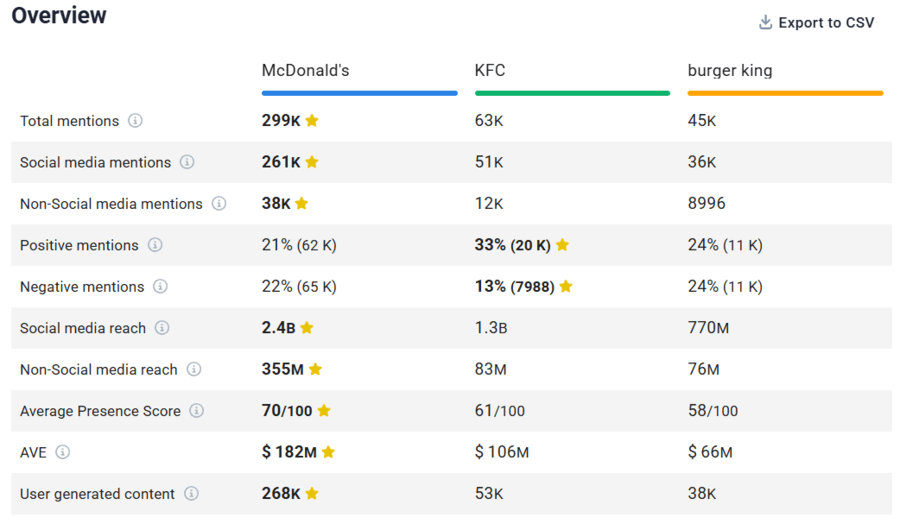
Conclusion :
✔️ Sans aucun doute, McDonald's affiche la meilleure performance globale.
✔️ Cependant, KFC a le pourcentage le plus élevé de mention positives (33%) et également le plus faible pourcentage de mention négatifs (13%).
✔️ Burger King s'est avéré être le plus faible dans cette comparaison.
Quel est votre avantage concurrentiel ? Comparez votre restaurant avec vos concurrents !
Les meilleurs outils d'analyse de la concurrence dans la restauration à utiliser en 2025 :
Sans une analyse concurrentielle bien menée, vous ne pouvez pas augmenter vos chances de réussite dans le secteur très concurrentiel de la restauration.
Cette analyse ne peut être menée correctement qu'avec l'aide de ces trois outils :
✅ AI Brand Assistant (alimenté par Brand24) : Votre assistant personnel pour tout - de l'identification des concurrents à la réalisation d'analyses détaillées. "Il fait tout pour vous, vous obtenez des informations précieuses et vous pouvez prendre des décisions en connaissance de cause.
✅ Brand24 : Mon "to-go" (à emporter) outil d'écoute sociale pour suivre les mention en ligne des concurrents. Grâce à de nombreuses fonctionnalités alimentées par l'IA, vous pouvez créer des analyses complexes pour votre restaurant et ses concurrents directs et indirects. Le tout en temps réel !
✅ Semrush : Mon complément préféré pour s'assurer que l'analyse concurrentielle de votre restaurant est complète. Avec cet outil, vous pouvez facilement voir quels sont les mots-clés pour lesquels vos concurrents se classent et quel est le trafic de leurs sites web.
Essayez les meilleurs outils d'analyse de la concurrence pendant une période d'essai gratuite !
Articles connexes

![Comment faire une analyse concurrentielle de l'IA ? Exemple + 8 étapes à suivre [2025]](https://brand24.com/blog/app/uploads/2021/06/2_Guide-to-competitor-analysis-with-template_2.jpg)
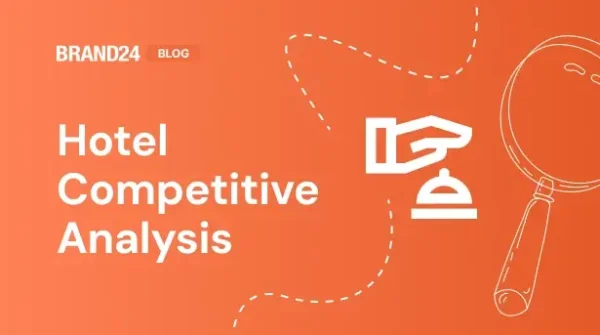

![Comment faire un rapport d'analyse concurrentielle [Modèle + exemples]](https://brand24.com/blog/app/uploads/2024/04/comp_analysis_report-600x335.webp)
